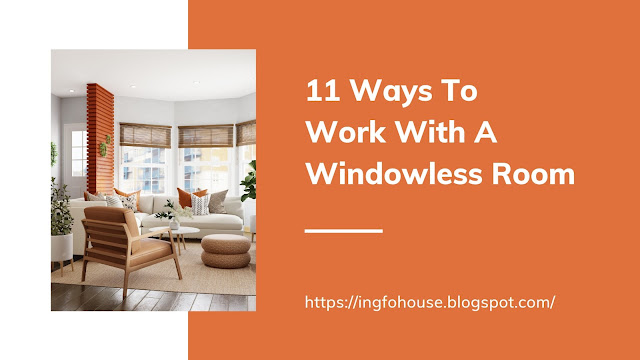11 Ways To Work With A Windowless Room
They say you never know what you had until it gone, and that certainly true for windows. When you're dealing with a windowless room, you really feel the missing natural light and appreciate the openness they bring. But whether you intend to carry out a complete business remodel or just a small fix, there are a lot of means to bring that same feeling to the ground level, living room, kitchen, and so forth.
1. Mirrors
Mirroring a large picture in your wall is one way to create the effect of a window for adding depth that breaks up claustrophobic wall planes.
2. White walls
White (or very light blue) walls imitate the fresh, full-spectrum glow of sunlight while holding ambient light from all sources for maximum brightness. Choosing one color for the walls and ceiling also enables boundaries between your room and adjoining spaces to appear shallow from afar, thereby making the enlarged room's focal point the objects inside.
3. Large art
Similar to a mirror, a large painting (particularly one in a white or metal frame and with a lot of white background) breaks down walls like a window would and brightens a room for those who don't care for white as a ceiling-to-floor color.
4. French doors
Installing French doors to a doorway creates the illusion of peeking out beyond a space, and allows a new source of light with one door and a different adjacent kitchen/living room. Use wall lamps or ceiling light fixtures (with a cool fluorescent bulb) to light the interior, and darkness or gloom will seem to come from outdoors.
5. Hidden lights
Tucking a few lamps where they should t can be seen help give your space a feeling of an indirect glow that mimics light flooding in from a distant source. Place lamps between beams, beneath furniture (such as behind a chair), or on a table to set a more secretive light source.
6. Transoms
Another architectural way to include light into a space is to add an overhead fluorescent light in the space between a room and another adjacent available space (especially if the next space over has natural light to receive). Place the light high enough, a transom window (technically, a transom is I barely understand this term) will open a space to new light without compromising privacy.
7. Internal windows
Open up a space in a home or condo where exterior window frames cannot be installed, and encourage illuminating your rooms with full-size window panes, where privacy is not as essential. Afterward, you can also add a drape or blackout shade to block off the view if you must.
8. Frosted glass
In the same kitchen, the addition of a pass-through allows not only food but also light to flow in, without exposing any dirty dishes to bystanders. Using a frosted pass-through such as this one is another terrific option for converting your kitchen into a clutter-free space while letting light filter in.
9. Undercabinet lighting
Undercabinet lights in a totally windowless kitchen not only provide task illumination, but also brighten various aspects of the room to brighten things up and prevent it from looking too dark. It can also be used as a way to inject additional light and space.
10. Ceiling exposures
This room has a window, you say? You're right, there is a window on the wall, but the level below may not have one. That's because the see-through ceiling is a great option. If you'd rather take the risk during a renovation, installing see-through window panels on the floor can brighten and expand the area below substantially.
11. Full-wall drapery
Want to create the effect of a window without opening it? A wall of drape conveys elegance to your sleeping area and offers the impression that there is much more beyond, even if you do not pull the curtain fully open.
